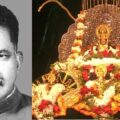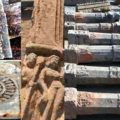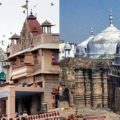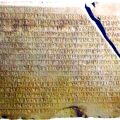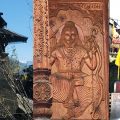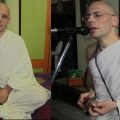Ram Janambhoomi Temple Bhoomi Pujan: Start of an Indic Renaissance
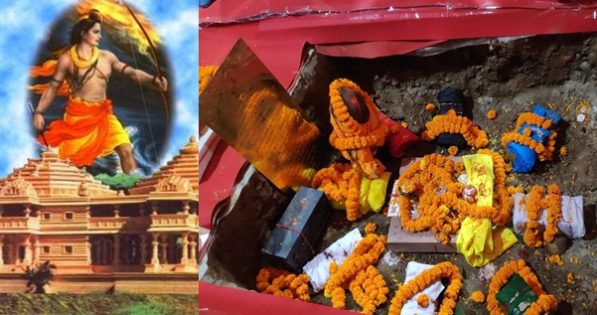
Bhoomi Pujan of Shri Ram Janambhoomi temple, successfully concluded today, 5th August 2020, by Shri Narendra Damodardas Modi, the Maharaja (PM in present political context) of Bharat, heralds a new beginning of Indic Renaissance. The wait for this occasion since 1528 (of 492 years), wherein thousands and lakhs of our ancestors sacrificed their lives to reclaim what belonged to us, is now over.
Shri Ram Janambhoomi temple will be a unique Teerthsthal, starting from today. This temple will mutely as well as loudly narrate to every visitor the saga of bhakti, sacrifice, hope, revival, reclamation, the continuous fight for our cultural/civilizational identity, and the unwavering faith on Shri Ram. Visiting this Teerthsthal will be equivalent to visiting the Char Dhams, the Saptapuris, the Shaktipeeths, the Jyotirlings, and every shrine across the world. Soil from more than 2000 pilgrimage sites and water from more than 100 rivers have been brought/used for the rituals for the Bhoomi pujan followed by construction.
Here’s a short history in brief about the fight for reclaiming what we lost.
Ayodhya was the capital of the Kosala kingdom since Treta Yuga where the Ikshvaku dynasty flourished. This was the place where Shri Ram was born. According to historical records, Brihadbala was the last king of this dynasty, born 32 generations after Shri Ram. The region was under the influence of Raja Vikramaditya for some time under whose patronage several temples were built. Click here to read about the history of Ayodhya.
Babri Masjid, named after Babur, was built by Mughal Commander Mir Baqi following the orders of Babur in 1528–29 on a hill called Ramkot (Rama’s Fort). The site originally hosted a temple. The Mughal army vandalised the site and built the mosque at its place. Alf Hiltebeitel’s book Rethinking India’s Oral and Classical Epics: Draupadi among Rajputs, Muslims, and Dalits finds mention of Ramkot as Rama’s Fort – the central site of Ram Janambhoomi, the sacred land of Rama’s birth and about this place being discovered by Raja Vikramaditya. His research further quotes Peter van der Veer’s book in justification.
According to KK Muhammad, who was part of the excavation team of the Ram Janambhoomi site, it was the temple of Shri Ram that existed there, proven by inscriptions. The Padmashree Awardee also said in an interview with ABP News that the temple structure found, dated back to the 11th-12th century and was built by the Gurjar Pratihars. Here’s the video clip:
It was in 1853 that two groups of Hindus and Muslims clashed over the Ram Janambhoomi site of worship in Ayodhya. On January 29, 1885 the first lawsuit being filed by Raghubar Das, the Mahant of Ram Janambhoomi against the Secretary of State for India in Council to build a temple at the Ram Chabutara spot. A series of more lawsuits were filed thereafter. After independence of India, the first lawsuit was filed after 1949. Nirmohi Akhara, in the year 1959, claimed the disputed site also by filing a lawsuit. And then the series of ‘tarikh par tarikh‘ by the Supreme Court!
In 1961, the Uttar Pradesh Waqf Board also filed a case in court seeking possession of Babri Masjid. It was on September 30, 2010 that the Allahabad Court distributed the disputed land into three parts, giving each to Ramlalla Virajman, Nirmohi Akhara sect, and the Sunni Central Wakf Board, UP. But on May 9, 2011, this order was challenged before the Supreme Court and the verdict was stayed.
After a 40-day hearing, on November 9, 2019, the Constitution Bench of the Supreme Court of India awarded the entire disputed area in Ayodhya to the Hindus. The verdict included offering of an alternative land of 5 acres in Ayodhya to the Sunni Central Waqf Board for the construction of a mosque. During the hearing, CJI Ranjan Gogoi had referred to an Archaeological Survey of India (ASI) report and various other evidences. Padmashree Meenakshi Jain’s books Rama and Ayodhya and The Battle for Rama on the Ram Temple of Ayodhya further strengthened the case. The centuries-long dispute ended on November 9, 2019 with the Constitution Bench of the Supreme Court delivering the Ayodhya verdict, permitting the construction of a temple at the site where the Babri Masjid once stood.
What were the temple remnants discovered in the Ram Jamabhoomi site before the Ayodhya verdict? Archaeologist KK Mohammed (honored with Padmashri award), the Regional Director (North) of the Archaeological Survey of India (ASI) earlier and currently the Project Archaeological Director for Aga Khan Trust for Culture revealed startling facts about the archaeological findings at the Ram Janambhoomi site in Ayodhya. It was before the Ayodhya verdict. His findings also strengthened the Ayodhya case. KK Mohammed extensively surveyed Ayodhya in 1978 as an archaeology student as a member of a team headed by Prof BB Lal. There were twelve students of School of Archeology Delhi and officials of the ASI. The surveying team spent around two months in various explorations in Ayodhya.
To quote an article published in Organiser, “The spirit of Ramajanmabhoomi movement is based on the crucial premise that the disputed structure was created after dismantling the Temple. Even before the movement the archaeological exercise was undertaken. The archaeological evidence collected by Prof Lal and his team, of which Dr KK Mohammed was a part, confirmed the presence of a huge pre-existing temple beneath the disputed structure. In his book, Njan Enna Bharatiyan, originally written in Malayalam, Dr Mohammad elaborated the whole process in this scientific exercise of revisiting history.”
Archaeological Findings by KK Mohammed at Ram Janambhoomi site
1. There were brick foundations that supported the pillars of a pre-existed temple.
2. Temple-pillars, made of black stone Black basalt), were embedded on the walls of Babri Masjid.
3. Poorna Kalashas are found engraved at the bottom of the pillars. A poorna kalasha is a pot topped with a coronet of mango leaves and a coconut. The Vedas find mention of poorna kalasha as a symbol of abundance and ‘source of life’. It is part of daily worship in many a temple/home. No ceremonies like Griha Pravesh, etc. is complete without the poorna kalasha. Most existing temple pillars and walls have the poorna kalasha motif engraved in them. What does this motif in the pillars under Babri Masjid prove?
4. There were fourteen such temple pillars before the mosque was demolished in 1992.
5. Brick platforms on which the black stone pillars used to rest, were found during excavations at the back and sides of the mosque.
Based on the above findings, KK Mohammed ‘made a statement in 1990 that there existed a temple beneath the Babri Masjid’. To further quote KK Mohammed, “But a few Leftist historians allied themselves with the confrontationist Muslims and distorted the matter.”
Other Archaeological Findings at Ram Janambhoomi site
1. 263 temple related artefacts were found during leveling of the front yard of the Babri Masjid as per report submitted by Dr Ragesh Tiwari, Uttar Pradesh Archeology Director.
2. Stone plaque called Vishnu Hari Shila was found at site during demolition. Inscription in Nagari script in Sanskrit in this stone plaque mentions about the temple being dedicated to Vishnu (A single temple complex in ancient and medieval India hosted several temple dedicated to different deities.)
3. Small clay statues of Vishnu’s Avataras including statues of Shiva, Parvati, and other deities from the Kushana period dating back to 1st century CE were found during excavations in 1992.
4. Over fifty brick foundations that once supported the temple pillars were found during excavations in 2003.
Following the directions of the Allahabad High Court, the ASI conducted an in-depth excavation of Ram Janambhoomi site from 12 March 2003 to 7 August 2003. The survey during excavations resulted in 1360 discoveries. Based on its findings, the ASI submitted a report to the court. As per the summary of the report, remains of a 10th-century temple were found under the mosque.
It is no surprise that Islamic invaders destroyed thousands of temples and build mosques in many of those temple sites using materials of the broken structures. While there are hundreds of external evidences visible, in hundreds of cases, the evidences can be found buried underneath.
Let the reclamation of our temples continue….
Jai Shri Ram!
Featured image courtesy: ANI and Google.

